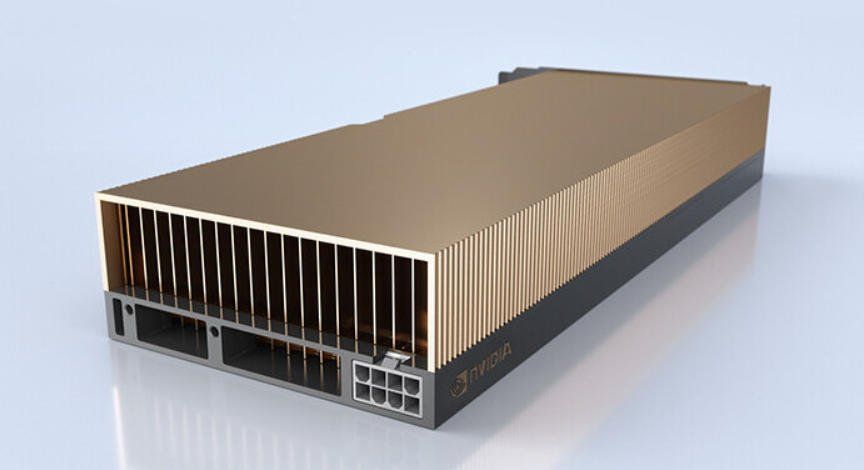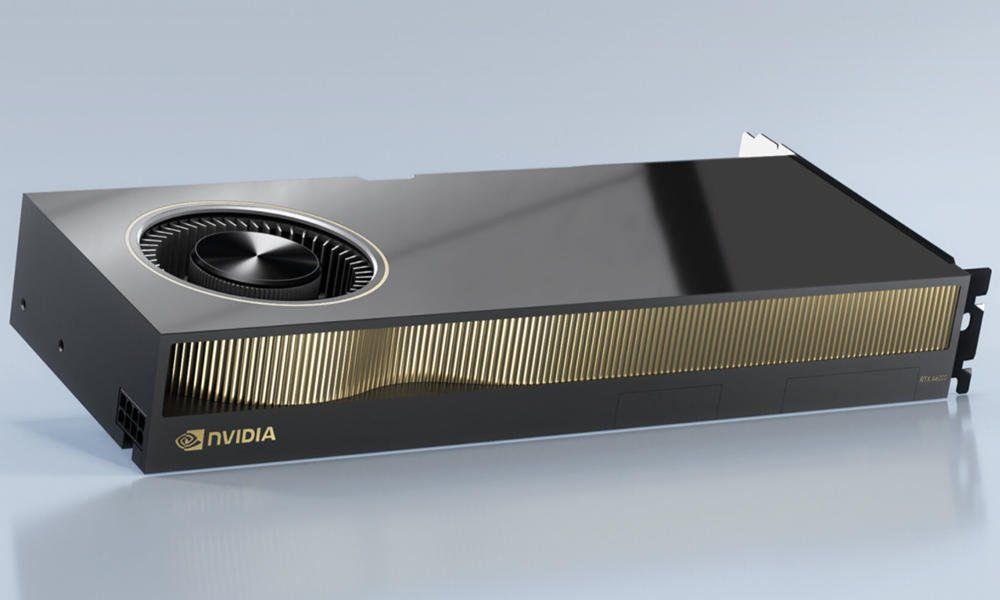At its GTC event, NVIDIA introduced the RTX A6000 and RTX A40, the first next-generation professional graphics cards under the “Ampere” architecture.
As we already anticipated, the professional graphics follow the design line and main characteristics of the already presented GeForce consumer models. Actually, their internal base is similar and the differences in performance come via software since NVIDIA publishes different drivers for consumer use (mainly games) and those related to professional solutions.
- NVIDIA GeForce RTX 3060 Ti release date and specs leaked
- NVIDIA GeForce RTX 3080 full specifications
- Image shows Nvidia RTX 3090, RTX 3080 and RTX 3070 size
NVIDIA RTX A6000 and NVIDIA RTX A40 specs
The first professional graphics under ‘Ampere’ architecture to reach the market will be the RTX A6000. It is based on the GA102 graphics core manufactured in 8 nm technological processes (the same one used by the GeForce RTX 3080), supports the PCIe Gen 4×16 interface, offers four digital video outputs Display Port 1.4 and is intended for professional workstations.
RTX A6000 has 10752 CUDA cores and a spectacular amount of dedicated memory, 48GB GDDR6 under a 384-bit interface, with ECC support and 768GB/s bandwidth. Machines that need even more can use the new third-generation NVLink bridge to link two cards for a total 96GB memory.
The NVIDIA RTX A6000 CuDA cores promise to double the speed of single-precision floating-point (FP32) operations, while the new RT cores will double the performance in ray tracing and the third generation Cores Tensor will offer five times the AI and auto-learning performance compared to the previous generation.

The second of the professional graphics presented by NVIDIA at the GTC is a variant of the A6000 for data centers. RTX A40 has the same GA102 graphics core, the PCIe Gen 4×16 interface and it has stream processors with 10,752 cores.
RTX A40 also includes the same amount of memory, 48GB GDDR6, although its bandwidth will be slightly lower. It does not have the digital video outputs Display Port of the workstation model.
Both cards are rated at 300 watts, using a 4+4-pin EPS power connector that is not compatible with the traditional 8-pin PCIe connector used in GeForce RTX consumer models. Of course, they will have full technological support from NVIDIA, GPU virtualization, NVIDIA GRID, NVIDIA Quadro Virtual Data Center Workstation and NVIDIA Virtual Compute Server.
The company will soon announce the availability and price of its cards, the first professional versions under the Ampere architecture. These are all the things we know about RTX A6000 and RTX A40 for now.





